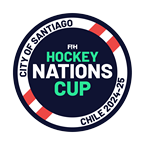
Five continents are represented at The Rabobank Hockey World Cup and, while sport is often said to be a universal language, there can be misinterpretations. For example, players relaxing after the game might be wearing their flip-flops if they are from England or the USA, but Australians will be in thongs, the Black Sticks will be wearing jandals, the South Africa team will be sporting slops and the Japanese will be in Zoris – and that's just one item of clothing. With 15 nations represented at The Hague in the men's and women's competition, there is likely to be the occasional language barrier, so listed below are 10 words commonly used in hockey across the globe, that can sometimes have subtle differences in their meaning.
A is for… Attacker(s):
This can either be the player or team in possession of the ball and trying to score a goal, or the collective name for the group of players that are usually positioned at the offensive end of the field for their team. Also known as forwards or strikers.
B is for… Backhand:
The use of the stick on the non-preferred (left) side to perform any skill e.g. a dribble, hit, tackle etc. Also known as the reverse or reverse stick.
C is for… Carpet:
The playing surface of hockey playing fields that are constructed of man-made products. Surfaces can be sand-based, water-based or a hybrid combination, and are also known as artificial or synthetic grounds/turf.
D is for… Drill or drilling:
This can either be the action of propelling the ball into an opponent’s foot in an attempt to gain a free hit (often associated with indoor hockey) or it can be a hard hit into the circle.
E is for… Eliminate/elimination:
The action of the attacking team beating a defending player by either dribbling or passing the ball past them.
F is for…Feint:
An elimination skill where a body movement and a feint to pass are used to move a defender one way before dragging the ball the other way and dribbling past them on that other side. Also known as a dummy.
I is for… Inside forward/inner:
The playing positions, usually one on the left and on the right side of the field, located between the half backs and the high, or strike, forwards.
J is for… Jab/jab tackle:
Usually refers to a type of tackle made by a lunging motion at the ball with one hand on the stick. Also know as a poke or stab tackle.
L is for… Lead/leading:
The movement of an attacking player who is not in possession of the ball to create an opportunity to receive a pass from the ball carrier, create space for the ball carrier to move into and/or create confusion amongst defenders.
M is for… Mark/marking:
The movement of a defender to cover, track and/or follow an opponent in an attempt to prevent him/her from receiving the ball. Techniques include one-on-one marking, zone marking, front marking, back marking and side marking.
With thanks to the Australian Hockey Association for some of the terminology.





















